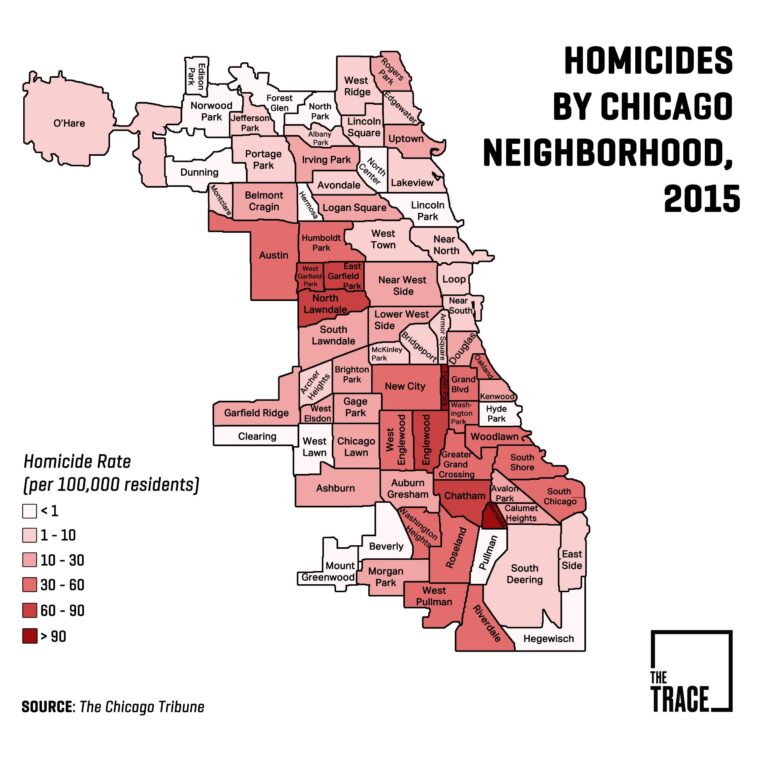Understanding Chicago’s Crime Landscape: A Data-Driven Viewpoint
Placing Chicago’s Crime Rates Within the National Framework
Amid ongoing national debates about urban crime, Chicago often emerges as a focal point, frequently depicted as a city overwhelmed by violence. However, when crime statistics are examined alongside national data, a more balanced picture emerges.Over the past decade, violent crime rates across the United States have varied significantly, with some metropolitan areas witnessing declines while others face increases. Chicago’s crime figures, often portrayed as exceptionally high, actually align closely with or fall below the national averages in critical categories such as robbery and assault. This suggests that Chicago’s challenges are reflective of broader trends affecting many large American cities rather than being uniquely severe.
To illustrate this, consider the violent and property crime rates per 100,000 residents in 2023:
| City | Violent Crime Rate | Property Crime Rate |
|---|---|---|
| Chicago | 710 | 2,100 |
| National Average | 740 | 2,250 |
| Houston | 730 | 2,300 |
| Philadelphia | 760 | 2,400 |
- Chicago’s violent crime rate is marginally below the national average, challenging the perception of it being exceptionally hazardous.
- Property crime rates in Chicago are comparable to those in other major urban centers.
- These statistics highlight that Chicago’s crime issues are part of a widespread urban phenomenon rather than an isolated crisis.
Dissecting the Reality Behind Political Narratives on Chicago’s Violence
Recent crime data paints a more complex and less alarmist picture than some political commentary suggests. While certain districts within Chicago have seen increases in violent incidents, the citywide trend over the last ten years shows stabilization or even reductions in many crime categories. The Chicago Police Department’s 2023 annual report reveals a nearly 15% decrease in homicides compared to the previous year, directly contradicting claims of an uncontrollable surge in violence.
Beyond violent crime, other offenses such as burglary and theft have also declined significantly, reflecting the impact of comprehensive crime prevention strategies. Experts note that improvements stem from addressing systemic issues, including economic inequality and community-police relations. Key statistics from the 2023 report include:
| Crime Type | 2022 Incidents | 2023 Incidents | Percentage Change |
|---|---|---|---|
| Homicides | 765 | 650 | -15% |
| Robberies | 4,150 | 3,900 | -6% |
| Aggravated Assaults | 12,000 | 11,700 | -2.5% |
| Burglary | 9,400 | 8,200 | -13% |
- Neighborhood-driven safety programs have strengthened local security.
- Focused law enforcement efforts have reduced crime in historically high-risk areas.
- Citywide investments in youth engagement aim to tackle violence at its roots.
How Community Initiatives and Policy Reforms Are Driving Crime Declines
The recent downturn in Chicago’s crime rates is largely credited to a combination of community activism and strategic policy changes. Local organizations have been instrumental in bridging gaps between residents and police, promoting peaceful conflict resolution, and delivering outreach in neighborhoods disproportionately affected by crime. These programs emphasize tackling underlying causes such as poverty and educational barriers, moving beyond purely punitive approaches.
Key drivers of this progress include:
- Robust youth mentorship and vocational training initiatives
- Community policing frameworks fostering clarity and collaboration
- Utilization of crime data analytics to deploy resources efficiently
- Expanded access to mental health and addiction treatment services
| Policy Initiative | Impact on Crime Reduction (2020-2023) |
|---|---|
| Expansion of Community Policing | -15% |
| Youth Engagement and Education Programs | -18% |
| Improved Mental Health Services | -10% |
| Targeted Hotspot Policing | -13% |
Strategic Recommendations for Enhancing Public Safety in Chicago
To effectively improve public safety, strategies must emphasize building trust and cooperation between law enforcement and communities. Investing in programs that address education,economic possibility,and mental health can reduce crime by tackling its root causes rather than relying solely on enforcement. Integrating these efforts with data-driven policing ensures that resources are focused where they are most needed,minimizing community alienation.
Additionally, leveraging modern technology alongside traditional methods can enhance both real and perceived safety. As a notable example, improved street lighting, advanced surveillance systems, and accessible interaction platforms contribute to quicker response times and stronger community engagement. The following table outlines key strategies and their anticipated benefits:
| Strategy | Primary Focus | Anticipated Outcome |
|---|---|---|
| Community Policing | Building Relationships | Enhanced Trust and Collaboration |
| Economic Empowerment Programs | Job Training and Education | Long-Term Crime Reduction |
| Technological Enhancements | Surveillance and Rapid Response | Improved Incident Management |
| Mental Health Support | Preventative Care | Decreased Violence |
Final Thoughts: A Balanced View on Chicago’s Crime Situation
While concerns about crime in Chicago remain a prominent topic, the data reveals a more intricate reality than some political rhetoric suggests. Contrary to portrayals of an uncontrollable crime wave,the city’s statistics show progress and stabilization in many areas. As Chicago’s leaders and communities continue to confront these challenges, grounding discussions in verified data and comprehensive analysis will be essential. This approach fosters informed dialogue and supports the advancement of effective, lasting public safety solutions.








